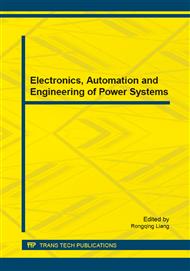p.198
p.203
p.207
p.211
p.216
p.220
p.224
p.229
p.233
LMI-Based H ∞ Control for Dual-Channel E-Commerce CLSC Networks and its Bullwhip Effect
Abstract:
Through the effective integration of the traditional channel and Internet channel, Dual-channel E-commerce is so important in the supply chain. In this paper, a state space dynamic model of a Dual-channel E-commerce closed-loop supply chain networks is established, which includes the manufacturer, the distributor, the consumer and the reverse logistics including the remanufacturing and the gratuitous return. An l2 norm of the model’s transfer function is described as a method to quantify the bullwhip effect. In order to minimize of the up bound of the bullwhip effect, the linear matrix inequality approach is applied to design H∞ control strategy under the uncertain conditions. A simulation number example indicates the proposed algorithm is effective and feasible.
Info:
Periodical:
Pages:
216-219
Citation:
Online since:
February 2015
Authors:
Price:
Сopyright:
© 2015 Trans Tech Publications Ltd. All Rights Reserved
Share:
Citation:


